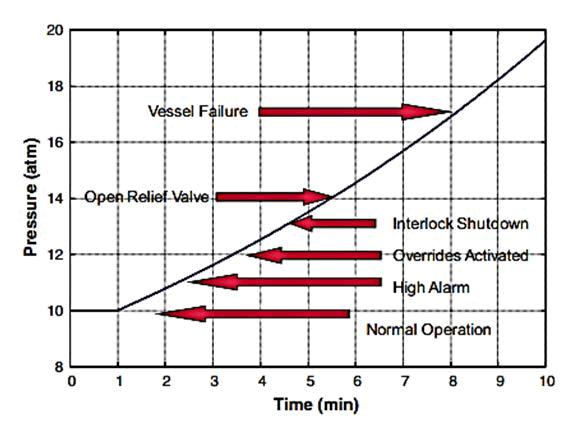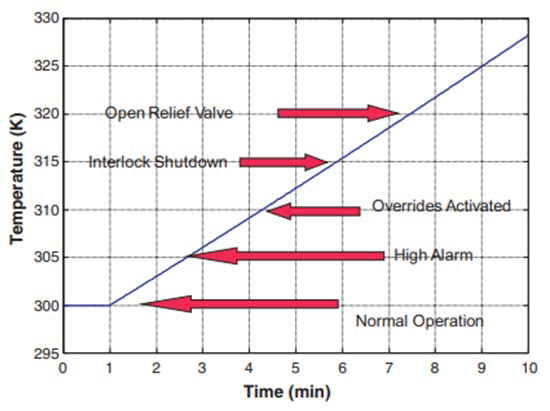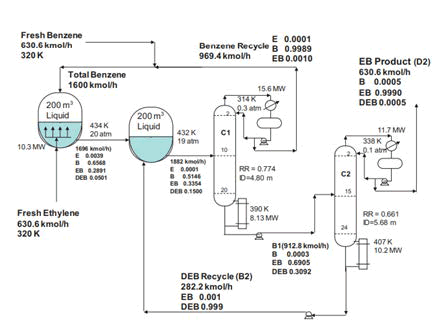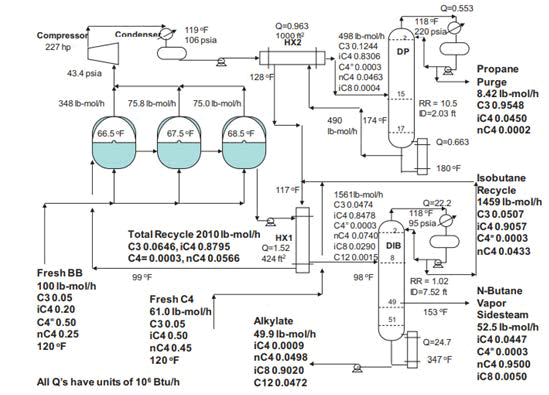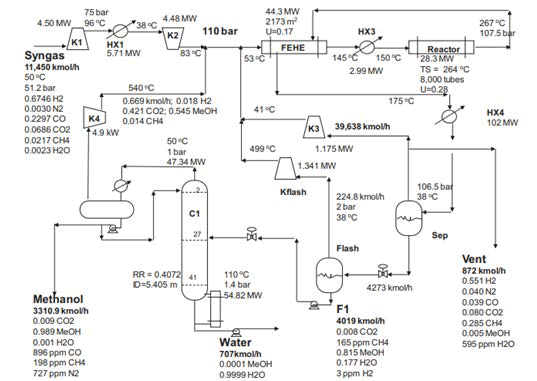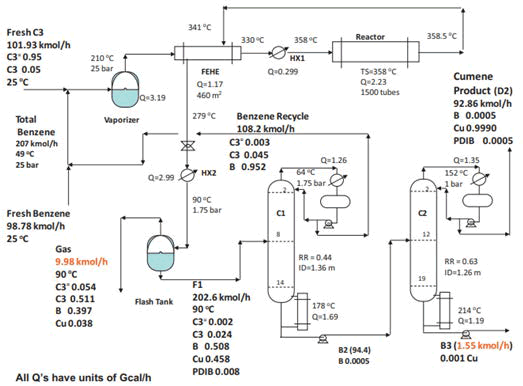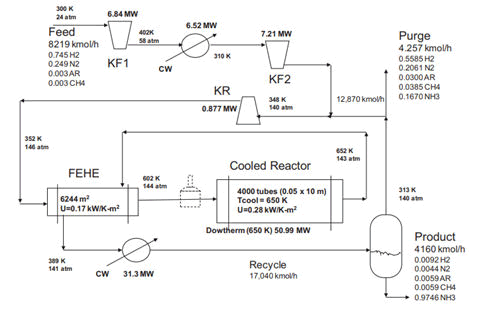Research Article, J Nucl Ene Sci Power Generat Technol Vol: 11 Issue: 6
Convention of Dynamically Advanced Simulation for Futuristic Nuclear Reactors Safety Analysis
Sharma RC1*, Pankaj Goswami2 and Durgesh Wadhwa3
1Department of Physics, SGT University, Gurugram, Haryana, Tunsia, India
2Department of Electrical and Electronic Engineering, Teerthanker Mahaveer University, Uttar Pradesh, India
3Department of Electrical and Electronic Engineering, Sanskriti University, Mathura, Uttar Pradesh, India
*Corresponding Author:Sharma RC, Department of Physics, SGT University, Gurugram, Haryana, Tunsia, India; E-mail: rcsharma@sgtuniversity.org
Received date: 09 February, 2022, Manuscript No. JNPGT-22-46995;
Editor assigned date: 11 February, 2022, PreQC No. JNPGT-22-46995 (PQ);
Reviewed date: 25 February, 2022, QC No. JNPGT-22-46995;
Revised date: 13 April 2022, Manuscript No. JNPGT-22-46995 (R);
Published date: 02 May 2022, DOI: 10.4172/2325-9809.1000284
Citation: Sharma RC, Pankaj G, Durgesh W (2022) Convention of Dynamically Advanced Simulation for Futuristic Nuclear Reactors Safety Analysis. J Nucl Ene Sci Power Generat Technol 11:6.
Abstract
Plant-wide control schemes that offer stable regulatory authority at a specified operating state are often developed using designing interactive of biochemical reactions. This study demonstrates that they may also be very helpful in the examination of safety issues in extreme circumstances. When designing safety measures for the process, the dynamic reaction of the procedure whenever different faults happen is important (alarms, overrides, interlocks, safety valves and rupture disks). For example, if the cooling water supply fails, the temperature and pressure with in operation would rapidly rise. The engineer may mathematically formulate appropriate security measures by calculating the rates of growth in these key variables as well as the time it takes to reach critical limits (safety reaction time). In many processes, chemical reactors are the most sensitive as well as potentially hazardous units, especially when thermal decomposition reactions as well as low per-pass ingredient transformations are involved. This study demonstrated how Aspen may be used in a variety of ways. For forecasting dynamic changes in key components, full advantage of technology may be utilized. Five procedures involving various kinds of cooling reactor (CSTR as well as tubular) as well as residency durations ranging from 0.16 to 60 minutes are shown in dynamic emergency safety simulations. Depending on the reactor, geographical environment under which it is placed, and the degree of constituent conversions, security turnaround times range from a few seconds to several minutes.
Keywords: Chemical; Dynamic; Reactors; Safety; Simulation
Introduction
Dynamic simulation is frequently used throughout management developing the system to manage typical operating near the intended steady state. Dynamic simulation, on the other hand, may be used to forecast how quickly variables will change in the case of an operational emergency or equipment breakdown. This kind of actionable information may readily be provided by modern dynamic simulators. When such an emergency situation occurs, the time it would take for key variables (temperature, pressure, or composition) to reach a high limit is essential because it dictates how quickly safety protection technology (scanners including actuators) must react to the detected event [1]. A loss of coolant, such as ammonia (moderate performance), cooling water (medium-temperature operation), or boiler feed water, is a typical example if reactor cooling is achieved by generating steam. There are many methods to identify this kind of loss. The flow rate of water of such refrigerant is the most apparent measurement. However, owing to turbulent flow conditions, flow sensors are typically noisy and have poor dependability. Orifice plates and impulse lines may clog and foul. It is very inconvenient to power down an entire facility owing to a false condition that exists.
In the industrial environment, hazard evaluation is an essential need. Risk identification is critical for guaranteeing a process's safe design and operation. Chemical reactors which included an exothermic chemical constitute possibly among most dangerous unit activities inside the energy industry [2]. The risk of thermal runaway, which may have disastrous effects, is a significant worry. This situation may be triggered by a number of factors, including cooling loss or incorrect reagent proportion. In reality, there are many methods for analysing dangerous situations. Among these, the Hazard and Operating Ability Analysis is a well-known and widely used method. HAZOP began as a qualitative technique.
Materials and Methods
Considering risk measurement is critical for proper decision-making, it has been progressively utilized since its beginnings in the 1960s and has developed to a semi-quantitative approach. Determining the consequences of failure situations is a difficult task. As a result, there is a strong need to understand how the system behaves during malfunctions in order to conduct safety assessments. Dynamic simulation is an effective technique for predicting the development the characteristics in chemical methods when disruption to normal for this aim.
As a result, other even more dependable detectors (such as pressure and temperature) are often employed to infer a coolant leak. To enhance defect detection reliability, several instruments based on various physical principles are employed. As the crucial variable drifts away from its usual value, there are various degrees of actions on being done. As shown in Figure 1, when pressure fluctuations exceed a certain percentage age of normal, an alarm is triggered to notify the operator. Any overridden system would begin to modify other controlled variables not usually utilized to maintain pressure at a higher percentage age in an effort to weather through the disruption without requiring a full plant shutdown.
As the reactor intensity approaches this "override" limit, for example, the feeding flow velocity may be decreased. If the situation worsens and the pressure rises to 30% over normal, an interlock mechanism will be triggered, effectively shutting down the operation. If these measures experience failure a further increase in pressure, the final line of defence for protecting the vessels' physical integrity is to release safe guards or blast ruptured discs at 40% over normal atmospheric pressure. The blow off steam mechanisms through which is what these discharges empty, of course, must be designed enough to withstand the heavy response which occur during in the occurrence. When temperatures seem to be the key variable, the percentage variations beyond normal typically considerably different than when pressure seems to be the crucial variable. Temperatures have an exponential effect on reaction rates. For each and every 5 K difference in weather, the reaction rate doubles, according to rule-of-thumb estimations for common activation strengths. As a result, even little temperature fluctuations may have a significant effect on the reactor.
The different health and safety steps are shown in Figure 2 at a suitable level. When the reactor temperature is greater 5 K over normal operating temperature, an alert is triggered. For a 10 K departure, overrides are activated. At 15 K deviations, interlocks are triggered, as well as rubber gaskets activate with 20 K deviations. The five processes described in the next section depict various kinds’ major times of emergency as well as provide time trajectory for key variables to demonstrate how quickly they change. Thermal decomposition reactions occur in all of the reactors. Although energy is continuously supplied rather than withdrawn in thermal decomposition processes, there are little safety problems. When a heating resource is lost, temperature changes decrease as well as responses slow things down. There is no overheating or over pressurization.
Ethyl benzene reactorThe ethyl benzene synthesis is shown in Figure 3 from a recent publication. Two fluids CSTR reactors are arranged in series. The first reactor, which has a capacity of 200 m3, receives ethylene, new benzene, and a recycle benzene stream. The processes are endothermic reaction, as well as the reactor runs at 4340 Fahrenheit and 12 atmospheres. The jacket/coil cooling system is cooled by supplying steam boiler water towards the reactor as well as producing steam at 414 K. When utilizing jackets as well as external coil cooling, a heat capacity coefficient of 0.85 k WK/m2 is considered, which implies the warm air area would have to be 602 m2.
With just 0.4 Mol% ethylene in the reactor effluent, ethylene conversion is extremely high. There isn't much ethylene inside the reactor fluid, therefore there's not much "fuel" for something like an explosive eruption. Because the sole source of a temperature increase has been the warmth of reaction of either the ethylene being fed, we would anticipate temperature rises in the case of data catastrophe of cooling to be rather gradual. The impact of running this reactor at a reduced ethylene conversion rate is addressed further down in this section. Aspen Dynamics assumes that the pressure remains static together at steady-state value during the dynamic simulation of a CSTR that is defined to be liquid filled. Of all, this isn't feasible. Recognizing this restriction, reactor temperature is considered to be the key variable.
When transferring the very same information form Aspen Plus calculations to Aspen Dynamics, you may choose from a range of nonlinear dynamic heat-transfer parameters. The Constant Duty approach is the most basic, but it is also the least realistic because surface, convection effectiveness, and temperatures producing factors are not taken into account. The total thermal efficacy is usually controlled. Wherever a pristine cooling material is burned, the constant temperature technique is appropriate (condensing). For something from the EB reactor, that mode is selected since it eliminates hydronic heating by combusting steam boiler waters, culminating in a tolerable temperature throughout the jacket/coil. Aspen Dynamics modifies the temperature of a medium, which is comparable to changing the uniform distribution of just a steamer pressure transducer.
Auto-refrigerating alkylation reactorCooling is required because like the low 68°F temperature and concentration, which is achieved by permitting the liquids to simmer through three reactors in some kind of a row and can then removing liquid vapour using a compression. Because the reactors are adiabatic, there is really no heat transfer.
Figure 4 depicts a methodological approach for something like an alkene reactions in which butane combines with butane lighters to produce isooctane (alkylate) from the inside of a fluid endothermic reaction. Here the same pressurized incoming air being concentrated at the sufficient intensity to permit for the condensing of chilled system. As a result, problems in the compressors or perhaps the cooling water towards the condenser are possible. Figure 4 depicts a methodological approach for something like an alkene reactions in which butane combines with butane lighters to produce isooctane (alkylate) from the inside of a fluid endothermic reaction. Here the same pressurized incoming air being concentrated at the sufficient intensity to permit for the condensing of chilled system. The results of various failure situations that occur at a time of 6 minutes. When the compressor goes off, the solid lines appear. Temperatures and pressures are gradually rising. When the condenser's heat removal is set to zero, the dashed lines appear. Take note of the sudden increase in drum pressure.
Methanol reactorTake a look at a tubular reactor's dynamic safety responses for tubular reactors. Aspen offers a variety of heat-transfer models [2]. Whenever the reactor is adiabatic, the heat-transfer rate may be controlled, which became useful. It is possible to choose another water flow rate of something like a chilling media for either counter-current or co-current flow as shown in the Figure 5. When heating or cooling is accomplished through condensation or condensation material, a continuous moderate model may be employed.
Another method is to specify heat gradients, which is useful in tubular reactors heated in burnt furnaces. The consistent cooling high temperature option is used because the three cylindrical reactor technologies studied in this study are cooled by generating steam or Diathermy. Carbon monoxide as well as carbon dioxide combines with hydrogen to produce gas mixture inside the methanol reactor's process biochemistry. A huge gas recycling stream exists.
Cumene reactorThe cumene method combines propylene and benzene in a cooled tubular reactor. The flow sheet is shown in Figure 6. The vapour-phase reactor is cooled by producing steam and runs at 358°C and 23 pressure. Prior to actually approaching the vapour phase reactor, the fresh as well as recycled benzene streams are vaporized.
The management of reactor exit temperature through steam pressure as well as the control of lash tank pressure via gas vent rate of flow are really the two main safety loops. Note that perhaps the reactor's high pressure is maintained via a pressure regulator before even the reaction chamber. The flash tank has a considerably lower pressure. Another potential safety situation is if the steam supply to the vaporizer fails, causing the steam valve to open wide. Figure 6 shows how to respond to three different kinds of failures. The solid lines indicate a cooling loss inside the reaction chamber. When chilling evaporation occurs in the condensation, dashed lines appear. Because when heat feedback towards the vaporizer reaches its maximum, the dotted lines appear [4].
Ammonia reactorThe gas-phase electrochemical reaction of carbon monoxide and hydrogen that produce molecules includes a large temperature and therefore a air pressure. Figure 7 depicts a step by step process for a chilled reaction chamber used in a process such as ammonia production. Dowtherm is utilized as a refrigerant due of other high reactors temperatures [5]. Incoming input gas is converted and mixed with a huge gas recycling stream in 2 different compaction systems before being warmed in a FEHE and supplied into the reactor. The liquid sample is extracted from the cooling reactors outflow and the recycling gas is pressurized as well as supplied returned towards the reactor via a separator drum. To eliminate the tiny quantities of inactive methane as well as argon that enter with the new feed, a modest purge stream is required.
This same power including both compressors is regulated to manage the flow of fresh feed. The pressure of something like the Dowtherm conditioning medium is used to regulate the reactor exit temperature. It's worth noting that perhaps the tension inside the system isn't fixed and fluctuates with throughput [11]. The purging water flow rate usually carefully regulated it toward the rejuvenating feed, however an elevated override function might release the purging valve if pressure climbs excessively high due to a thermodynamically discrepancy in the proportion of hydrogen and nitrogen going through the system throughout the refreshing feed. A slightly raised overcoming mechanism decreases fresh feed water flow rate if reactors temperatures reach too higher. The performance of this override controller is detailed further down. The two primary safety failures are a loss of cooling across the reactor (Dowtherm) and a lack of coolant inside the condenser. When the temperature difference coefficient U is adjusted to zero, it takes approximately 50 seconds for the reactor outlet temperature to increase 5 K. During this time, the pressure increases by roughly 5 atm.
Result and Discussion
A major new use of artificial intelligence techniques is the deployment of a knowledge-based classification algorithm to nuclear reactor management. Even though knowledge-based systems are starting to show their worth in a variety of industries, the radioactive application is distinct in many respects. The nature of the decision-making process differs from that of a typical expert system application. A nuclear power plant's functioning also requires the efficient integration of a massive quantity of data. The number of features to be monitored in reactor systems is more than those in other industrial automation scenarios due to the safety requirements [5].
There is a way to suggest with the forward (if not futuristic) architecture based on actual, functioning prototypes like power reactors, cities, as well as military uses somewhere between previous versions of utopian visions of electric cities and current nuclear implementations. Along with its effectiveness, safety, availability, and low waste, this substance thorium has only been regarded the good energy for nuclear reactions from the beginning of nuclear energy research. Cold War objectives, on the other hand, defied the rationale of economical energy production by establishing a national network of reactors intended to concentrate fissile material since a nuclear arsenal, thus reducing nuclear energy to a single fuel source. Global warming, rising fuel costs, carbon emissions, as well as anti-proliferation groups have all pushed the debate over clean, safe wind reactors towards the centre of American electricity sector. Relying on either a uranium radioactive network is no longer acceptable or viable [6].
Ethyl benzene reactorAs the amount of "fuel" inside the nuclear power plant decreases (leading to a high starting hydrocarbon concentrations), the temperatures increase quicker. In approximately 2 minutes, the temperature increases by 10 degrees Celsius. Like the remaining "fuel" is used, the hydrocarbon concentrations in the reactor decrease, causing the temperature to rise more quickly. This illustrates how conversion affects the safety connection speed. The safety reaction times of low-conversion reactors are shorter [7].
Auto-refrigeration alkylation reactorWhen the compressor goes off, the solid lines appear. Temperatures and pressures are gradually rising. When the condenser's heat removal is set to zero, the dashed lines appear. Reactor pressure rises at a slower rate. Take note of the sudden increase in drum pressure. This same butene brand new feed is still being supplied throughout each of these failures. When the compressor fails, the fresh butene supply is shut off, as seen by the dashed line. Temperatures and pressure increase more slowly, allowing the safety system to react more quickly. Despite the fact that no reaction is taking place, the heated 117°F isobutane recycling has still been entering the reactors, causing the temperature and pressure to rise. The alkylation reactor's safety reaction time is quite lengthy, allowing for proper action to avoid severe issues [8].
Methanol reactorThe management of something like the reactors departure temperatures through manipulation compressed air in the reactor as well as the temperatures of the streams exiting this same condensation before even the separating by managing cooling water flow rate are the two most important safety loops. The loss from process water towards the reactor is approximated by setting the total heat-transfer efficiency throughout the reactor to zero but use an Aspen Dynamics Task [9].
Cumene reactorThe two primary safety loops are indeed the control of reactors exit temperatures via compressed gasses (median warmth with in Aspen Simulation modelling) and the management of flashing tank pressure through gas vent flow rate. And that was before the flashing container, a control valve maintains a high level of temperature on the inside of the reactor. The temperature inside the flash vessel is significantly lower. Another possible hazard would be if the vaporizer's steaming source fails, forcing the atrioventricular valves to open the window [10].
Ammonia reactorWhen heat transmission in the condensation is reduced to 0 for 10 seconds, the solid lines appear. The time it takes for the reactor exit temperature to increase 5 K as well as the blood pressure rises 5 ATM is considerably less than it is for a cooling water loss, taking just 6 seconds. When there is a loss of chilled system, the safety system must react quickly. When the refrigerating water is gone, the dashed lines represent the same disturbance, but with an interlock mechanism that sets the feed flow controller's set point to zero. The time it takes for safety to respond has substantially risen [11].
Conclusion
Five distinct reactors with various processes were used to demonstrate any use of simulation model to systematically investigate safety response times. These reactors in the liquid phase have been found to respond slowly to lack of standards. Our study does not include all hazards associated with nuclear energy; rather, it focuses on the direct risks associated with the operation of nuclear reactors as established by the International Nuclear Event Scales.
To manage severe failures without creating safety and environmental issues, gas-phase tubular reactors need an incredibly quickly safety control framework. Nuclear energy has the potential of meeting rising global energy demand while reducing CO2 emissions as well as contributing to greater global warming. While it is undoubtedly crucial to minimize humanity's carbon dioxide emissions thru all the electricity sector that make decisions based on renewable energy, the surprisingly high probability of some other Chernobyl occurring anywhere else on the biosphere, including the outstanding issue of atomic power waste disposal, suggest that the burden on subsequent generations might very well simply transfer from atmospheric CO2 to raised up radioactive particles and long-term nuclear waste treatment.
Spent nuclear material management is arguably the greatest hazard because of the explicit processes necessary, which involve the protection as well as storage of high-level radioactive material for considerably longer than the individual lifespans of past human civilizations. Detection and quantification of something like the dynamic transient conditions of chemical system components is possible thanks to sophisticated dynamics simulations. In chemical fluidized bed reactor, safety is very essential.
References
- Hedayat A (2020) Developing a futuristic multi-objective optimization of the fuel management problems for the nuclear research reactors. Kerntechnik 85: 26-37. [Crossref][Google Scholar]
- Aggarwal SK (2016) A review on the mass spectrometric analysis of thorium. Radiochimica Acta 104: 445-455. [Crossref][Google Scholar]
- Chanaron B, Ahnert C, Crouzet N, Sanchez V, Kolev N, et al. (2015) Advanced multi-physics simulation for reactor safety in the framework of the NURESAFE project. Ann Nucl Energy 84:166-177. [Crossref][Google Scholar]
- Li, Huang X, Li XG, De Xiao W (2017) Simulation of ethyl-benzene dehydrogenation process in a monolithic reactor. Chemical Eng 45:55-61. [Google Scholar]
- Dong P, Li Z, Wang D, Wang X, Guo Y, et al. (2019) Alkylation of benzene by methanol: Thermodynamics analysis for designing and designing for enhancing the selectivity of toluene and para-xylene. Catalysis Letters 149: 248-258. [Crossref][Google Scholar]
- Luyben WL. (2009) Design and control of an autorefrigerated alkylation process. Ind eng chem res 48:11081-11093. [Crossref][Google Scholar]
- Khlebnikova E, Dolganova I, Ivashkina E, Koshkin S (2017) Modeling of benzene with ethylene alkylation. Int J Chem Eng Appl 8: 61-66. [Crossref][Google Scholar]
- Leonzio G, Foscolo PU (2020) Analysis of a 2-D model of a packed bed reactor for methanol production by means of CO2 hydrogenation. Int J Hydrogen Ener 45: 10648-10663. [Crossref][Google Scholar]
- Kharlampidi KE, Nurmurodov TS, Ulitin NV, Tereshchenko КA, Miroshkin NP, et al. (2021) Design of cumene oxidation process. Chem Eng Process-Process Intensification 161: 108314. [Crossref][Google Scholar]
- Badescu V (2020) Optimal design and operation of ammonia decomposition reactors. Int J Energy Res 44: 5360-5384. [Crossref][Google Scholar][Pubmed]
- Straus J, Krishnamoorthy D, Skogestad S (2019) On combining self-optimizing control and extremum seeking control applied to an ammonia reactor case study. J Process Control 78: 78-87. [Crossref][Google Scholar]
 Spanish
Spanish  Chinese
Chinese  Russian
Russian  German
German  French
French  Japanese
Japanese  Portuguese
Portuguese  Hindi
Hindi 